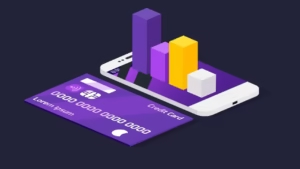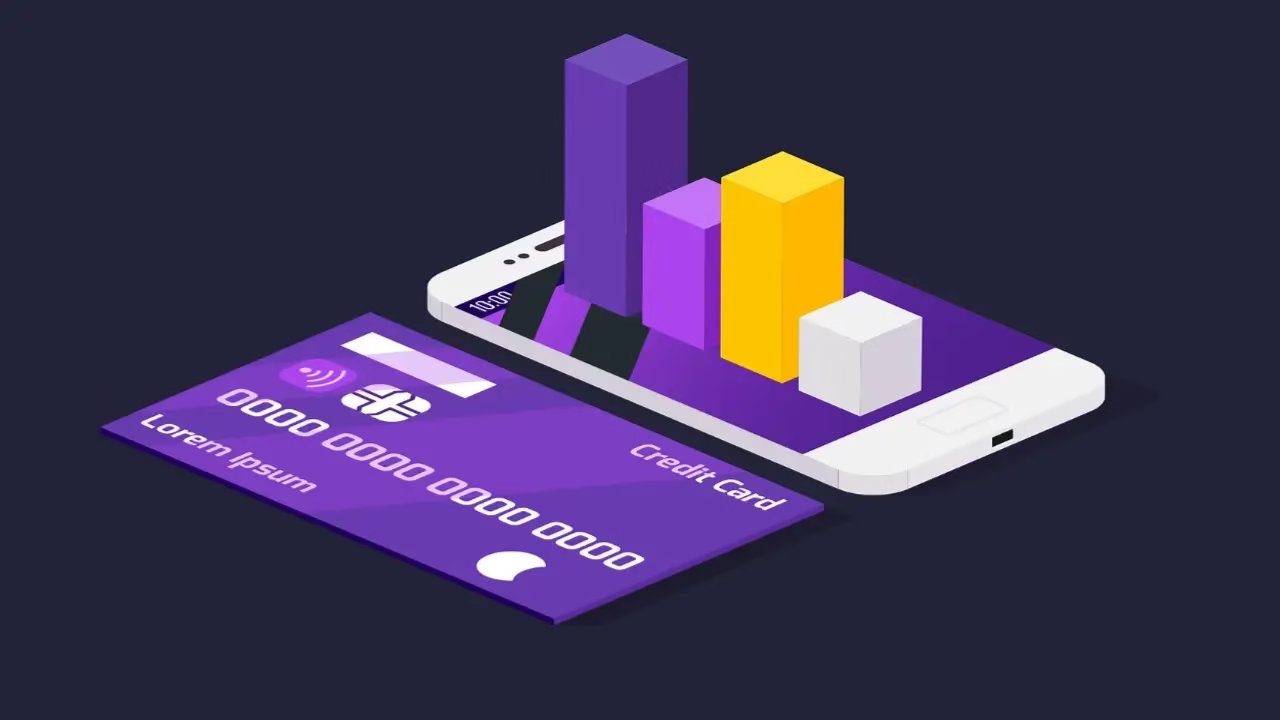Digital Payments: Transforming Transactions in India
Explore digital payments and their impact on India’s economy. Learn about benefits, challenges, trends, and real-world examples of digital payments to make informed financial decisions.
SEO URL:
/digital-payments
Digital Payments: Transforming Transactions in India
Imagine a world where every financial transaction is smooth, secure, and instantaneous—whether you’re shopping online, paying bills, or transferring money to family and friends. This is the promise of digital payments. In today’s rapidly changing financial landscape, many individuals and businesses in India are asking: How can digital payments simplify our lives and boost economic growth? This article will guide you through everything you need to know about digital payments, addressing common issues such as security, cost savings, and convenience. Whether you’re a student, a small business owner, or simply curious about new financial trends, our comprehensive guide will provide clear, informative insights in simple human English.
1. Introduction to Digital Payments
Digital payments refer to the electronic transfer of money through various platforms like mobile apps, online banking, and payment gateways. In the first 100 words, it’s essential to understand that digital payments are revolutionizing how we handle money. With increasing concerns over cash handling, security risks, and the need for speed in financial transactions, digital payments offer an innovative solution. This guide explains how digital payments work, the benefits they provide, and the challenges they face. Are you struggling with lengthy bank queues or security issues with cash transactions? Read on to learn how digital payments can solve these everyday problems while boosting efficiency and convenience.
2. Understanding Digital Payments
Digital payments are a broad concept that includes any financial transaction conducted electronically. This encompasses:
- Online banking transfers
- Mobile wallet transactions
- Payment gateway systems used in e-commerce
- Contactless payments using cards or NFC-enabled devices
These systems work by transferring money digitally from one account to another, eliminating the need for physical cash. For more in-depth definitions and technical insights, you can explore resources on the Reserve Bank of India website for authoritative information.
3. Historical Evolution of Digital Payments
3.1 The Early Days

The journey of digital payments began in the 1990s with the advent of the internet and online banking. Early systems were simple and often limited to basic bank transfers.
3.2 Growth in the 2000s
As technology advanced, mobile phones and improved internet connectivity spurred the development of mobile wallets and payment gateways. Innovations like PayPal emerged, laying the foundation for global digital payment systems.
3.3 Digital Payments in India Today
India witnessed a digital payments revolution post-2016 with the launch of the Unified Payments Interface (UPI). This system allowed for real-time transactions and quickly became popular due to its simplicity and efficiency.
“Digitalpayments have not only transformed how we transact but have also paved the way for financial inclusion.”
— Financial Analyst, Reserve Bank of India
For more historical context, refer to a detailed overview on Forbes that highlights the transformation of digital payments globally.
4. Benefits of Digital Payments
4.1 Convenience and Speed
Digitalpayments eliminate the need for cash, saving time and reducing the hassle of physical transactions. With just a few taps on your smartphone, you can complete a transaction instantly.
4.2 Cost Efficiency
Electronic transactions often come with lower processing fees compared to traditional banking methods. This results in cost savings for both consumers and businesses.
4.3 Enhanced Security
Digitalpayments utilize encryption and secure authentication methods, reducing the risk of theft and fraud associated with cash transactions.
- Encryption Technology: Protects sensitive data during transactions.
- Two-Factor Authentication: Adds an extra layer of security.
- Fraud Detection Systems: Monitor transactions in real time.
4.4 Financial Inclusion
Digitalpayment systems help bring unbanked populations into the financial system, promoting economic growth and stability. According to a report by the World Bank, digital payments play a key role in enhancing financial inclusion globally.
5. Challenges Facing Digital Payments
While digitalpayments offer numerous benefits, they also come with challenges that must be addressed.
5.1 Infrastructure Limitations
In some parts of India, especially rural areas, poor internet connectivity and limited digital infrastructure can hinder the adoption of digitalpayments.
5.2 Cybersecurity Risks
As transactions move online, the threat of cyberattacks increases. Ensuring robust security measures is essential to protect user data and prevent fraud.
5.3 Digital Literacy
Many non-tech users find digital payments intimidating due to a lack of understanding of technology. Bridging this gap through education and user-friendly interfaces is crucial.
5.4 Regulatory and Compliance Issues
Keeping up with regulations and ensuring compliance can be complex, particularly in a fast-evolving digital environment.
For more detailed information on cybersecurity risks in digitalpayments, visit Kaspersky for expert insights on protecting digital transactions.
6. Impact of DigitalPayments on Businesses
Digitalpayments have transformed business operations across industries, offering significant advantages for companies of all sizes.
6.1 Improved Cash Flow
With faster transaction times, businesses benefit from improved cash flow. This allows companies to reinvest more quickly and maintain smoother operations.
6.2 Enhanced Customer Experience
Customers appreciate the ease and speed of digital transactions. A seamless payment experience can boost customer satisfaction and loyalty.
6.3 Data Analytics and Insights
Digitalpayments generate a wealth of data that businesses can analyze to better understand consumer behavior. This information helps in optimizing marketing strategies and tailoring products to customer needs.
6.4 Reduced Operational Costs
Automation and streamlined payment processes reduce administrative burdens and lower transaction costs, contributing to overall business efficiency.
For further reading on the impact of digitalpayments on business, check out Harvard Business Review for case studies and expert analyses.
7. Adoption of DigitalPayments in India
7.1 Government Initiatives
The Indian government has actively promoted digitalpayments through initiatives like Digital India and demonetization. These policies have accelerated the adoption of digitalpayment systems across the country.
7.2 Growth of Mobile Payment Platforms
Mobile payment platforms such as Paytm, PhonePe, and Google Pay have seen exponential growth. They offer user-friendly interfaces and have played a pivotal role in making digitalpayments mainstream.
7.3 Consumer Behavior Trends
Indian consumers are increasingly comfortable with digital transactions. A survey by Statista shows that a significant percentage of urban consumers prefer cashless payments due to their speed and convenience.
7.4 Challenges in Rural Areas
Despite rapid urban adoption, rural areas still face challenges like limited internet access and lower digital literacy. Addressing these issues is crucial for nationwide adoption.
8. Choosing the Right Digital Payments Solution
With a plethora of digitalpayment solutions available, selecting the right one depends on your specific needs—whether as a consumer or a business.
8.1 Key Considerations
- Ease of Use: Choose a platform with a simple, intuitive interface.
- Security Features: Look for robust encryption and fraud protection measures.
- Cost Structure: Evaluate transaction fees and other charges.
- Customer Support: Ensure that reliable support is available in case of issues.
- Integration Capabilities: For businesses, the solution should integrate seamlessly with existing systems.
8.2 Comparing Popular Platforms
Below is a table comparing popular digitalpayment platforms in India:
Table source: Adapted from various industry reviews and platform comparisons.
8.3 Practical Tips for Implementation
- Start Small: Test the platform with small transactions before full-scale adoption.
- Educate Yourself: Take advantage of online tutorials and free courses to learn how to use digitalpayment tools effectively.
- Monitor Performance: Regularly review your transaction data to ensure the platform meets your needs.
For more detailed reviews and recommendations, visit Aixplore Tech for expert insights on digital payments.
9. Future Trends in Digital Payments
9.1 Increasing Mobile and Contactless Payments
The future of digitalpayments is moving toward even greater reliance on mobile and contactless technologies. With the rollout of 5G networks, transaction speeds will increase, further boosting the efficiency of digital payments.
9.2 Integration with Emerging Technologies
Technologies such as blockchain, artificial intelligence, and machine learning will enhance the security and efficiency of digital payments. For instance:
- Blockchain: Can provide a decentralized, tamper-proof ledger for transactions.
- AI and ML: Help in fraud detection and personalized financial services.
9.3 Expansion in Rural Markets
Efforts to improve digital literacy and infrastructure in rural India will likely expand the reach of digitalpayments. Government initiatives and private investments will play a crucial role in bridging the urban-rural divide.
9.4 Enhanced User Experience
Future digitalpayment platforms will offer more personalized and user-friendly experiences. From voice-activated transactions to real-time customer support, advancements will make digital payments even more accessible.
For more on future trends in digitalpayments, check out MIT Technology Review for expert analyses.
10. Digital Payments and Economic Impact
10.1 Driving Financial Inclusion
Digitalpayments are a key driver of financial inclusion, enabling access to banking services for millions of previously unbanked individuals. This leads to a more inclusive economy where everyone can participate in financial activities.
10.2 Boosting Economic Growth
By streamlining transactions and reducing reliance on cash, digitalpayments contribute to increased economic activity. Faster transactions mean more efficient business operations, which can drive overall economic growth.
10.3 Reducing Corruption and Enhancing Transparency
Electronic transactions create a transparent record of financial activities, reducing opportunities for corruption and fraud. This transparency fosters trust between consumers, businesses, and regulators.
For additional insights into the economic impact of digital payments, refer to research published by the World Bank.
11. Real-World Case Studies and Success Stories
Case Study 1: Urban Retail Transformation
A large retail chain in India implemented digitalpayments across its outlets, resulting in:
- 20% Reduction in Transaction Times: Faster checkouts improved customer satisfaction.
- Significant Cost Savings: Lower cash handling and processing fees.
- Increased Sales: Enhanced customer experience drove repeat business.
Case Study 2: Rural Economic Empowerment
A government-backed initiative introduced digitalpayment kiosks in rural areas, leading to:
- Greater Financial Inclusion: Rural residents gained access to banking services.
- Local Business Growth: Increased digital transactions boosted small businesses.
- Improved Public Services: Digital payments streamlined government services and subsidies.
Case Study 3: E-commerce Success
An online marketplace revamped its payment system using digitalpayments, achieving:
- Lower Cart Abandonment Rates: A seamless checkout process increased sales.
- Enhanced Security: Reduced fraud boosted consumer confidence.
- Actionable Data Insights: Transaction data helped refine marketing strategies.
For more detailed case studies, visit Harvard Business Review for expert analysis on the digital economy.
12. Frequently Asked Questions (FAQ)
Q1: What are digital payments?
A: Digitalpayments refer to the electronic transfer of money using platforms such as mobile wallets, online banking, and payment gateways. They eliminate the need for physical cash.
Q2: How do digital payments benefit consumers?
A: Digital payments offer speed, convenience, improved security, and cost savings, making everyday transactions easier and more efficient.
Q3: What challenges do digital payments face in India?
A: Challenges include infrastructure limitations in rural areas, cybersecurity risks, digital literacy gaps, and regulatory issues.
Q4: How are digital payments impacting the economy?
A: They drive financial inclusion, reduce transaction times, cut costs, and boost economic growth by streamlining financial transactions.
Q5: Where can I learn more about digital payments?
A: For more insights, visit high-authority sites like the Reserve Bank of India and MIT Technology Review.
13. Conclusion and Call to Action
The rise of digital payments is reshaping the financial landscape in India, transforming the way we transact, manage money, and drive economic growth. From enhancing convenience and security to promoting financial inclusion and transparency, digital payments offer a myriad of benefits that address everyday challenges. Whether you are a consumer looking for faster, safer transactions or a business seeking to streamline operations, understanding the digitalpayments ecosystem is crucial.
As you navigate this dynamic digital economy, remember that every transaction contributes to a larger shift toward a more efficient and inclusive financial future. Now is the perfect time to explore and adopt digital payments to stay ahead in an ever-evolving marketplace.
Call to Action:
Ready to embrace the future of transactions? Start exploring digital payments today to experience the convenience, security, and efficiency they offer. For expert guides, tips, and the latest updates on digital innovation, visit Aixplore Tech. Subscribe to our newsletter for regular insights and share your experiences in the comments below. Transform your financial journey with digitalpayments and be a part of India’s digital revolution!
This comprehensive guide on digital payments has provided detailed, actionable insights into how electronic transactions are transforming our daily lives and the broader economy. With clear explanations, practical examples, and expert insights, you now have the knowledge to navigate and benefit from the digitalpayments ecosystem. Embrace this technology and unlock a future of seamless, secure, and efficient financial transactions.


